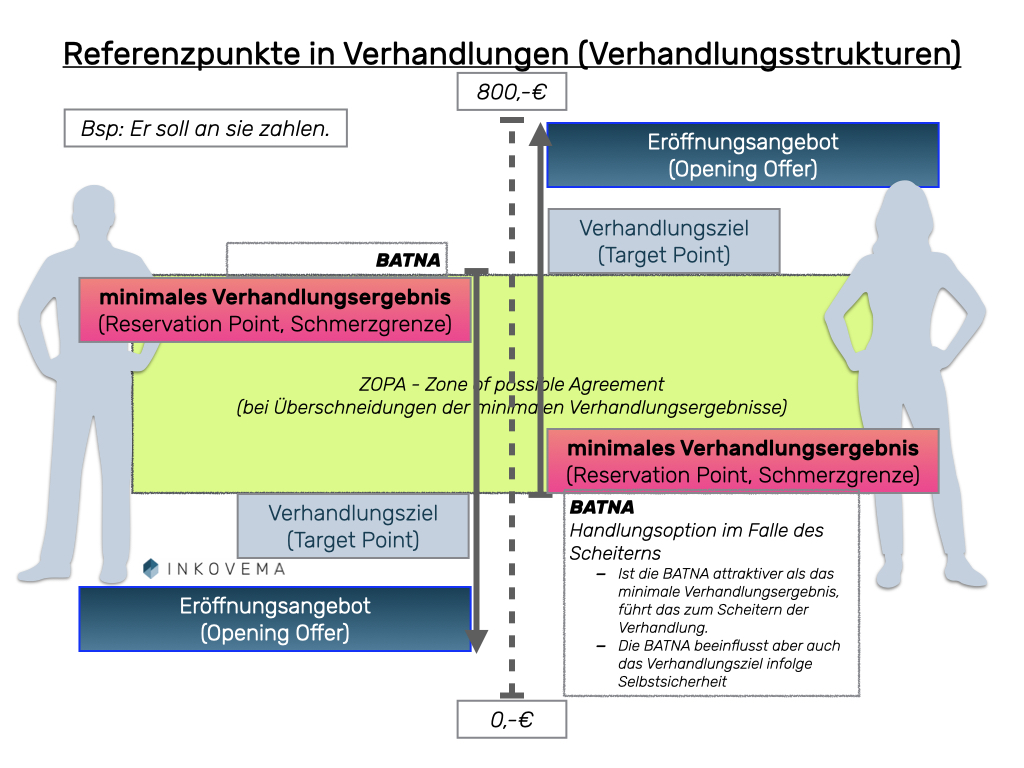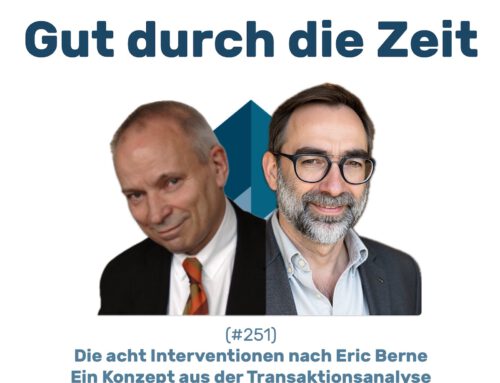INKOVEMA Podcast „Episodes of Mediation“
#18 EdM – The ignorance of the existence of a room for negotiation
The scope for negotiation as a negotiation zone of overlapping minimum results
Episodes of mediation. The podcast on practical questions about mediation and conflict management.
That is Episode 18 of Episodes of Mediation – The negotiating partners' ignorance of the existence of negotiating room for manoeuvre.
Problem statement:
IGNORANCE OF THE EXISTENCE OF A ROOM FOR NEGOTIATION
The negotiating room for manoeuvre is the consequence of various reference points that the negotiating partners each define for themselves. The negotiating room for manoeuvre does not refer to the range within which a person is prepared to accept an agreement and thus the area that lies between the negotiation objective and the minimum negotiation result (pain threshold). The negotiating room for manoeuvre is the consequence of a social process between the negotiating partners.
In addition to the already mentioned Negotiation objective and the minimum negotiation result the third point of reference, which is the Opening offerwhich will generally be better than the negotiation target, i.e. lower than the negotiation target in the case of the payer. This results in a classic opening problem in negotiations.
The Initial problem of the negotiating partners is the following, which is illustrated graphically in the show notes: The negotiating parties know nothing about the minimum negotiation result of the other party. Therefore, the negotiating parties also do not know whether their own minimum negotiation result overlaps with the minimum negotiation result of the other side and thus a negotiation zone, a zone of possible agreement (ZOPA) is given. I will go into this in more detail in another episode.
I would like to give you an example of a case that I recently dealt with in my practice: A couple who were separating were due equalisation payments for which only the absolute amounts were known as de facto limits. They were between € 0 and € 800, which was the absolute lowest (and unacceptable for her) payment and the absolute highest (and unacceptable for him) payment.
As neither partner knew the minimum negotiation outcome of the other, they did not know from the outset whether there was any room for negotiation at all, i.e. a zone of possible agreement. Because if the minimum negotiation results are so far apart that they do not overlap, there is no ZOPA, no zone of possible agreement.
Example: If his pain threshold (minimum negotiation result) is that he is not prepared to pay more than €250 and she is prepared to make a minimum payment (minimum negotiation result) of €500, then there is no room for negotiation. Even if this may come about because the parties have heard of these personal limits (and are each prepared to make adjustments, which will be discussed later).
What role can a mediating negotiator play here? To reduce this knowledge gap and minimise the negotiation risks.
Solution approach:
COMMUNICATION OF THE MINIMUM TARGETS – WITHOUT THE OPPOSING PARTY BEING INFORMED OF THE SPECIFIC AMOUNT.
For the mediating negotiator, e.g. in a mediation, it is important 1) to understand this negotiation situation or, more precisely, this negotiation dilemma of the parties, 2) to make the offer of concrete negotiation assistance transparent, 3) if the offer is accepted, to carry out the negotiation assistance correctly – and then to stay the course.
What does that mean in concrete terms? 1) Understanding the negotiation dilemma In the case of a concrete payment, the negotiation dilemma becomes noticeable for everyone. The parties find it difficult to make an initial negotiation offer, not only because this initial offer will have an impact on the final outcome and 2) the parties are torn between not wanting to give too much, but also not wanting to provoke the failure of the negotiations under any circumstances. The parties need to find a sensible solution. And this is where the negotiation assistant can offer concrete help:
2) The value of his help is, determine whether there is room for negotiation without the parties having to reveal their minimum negotiating objectives to each other. In return, I have offered the two parties the opportunity to write their minimum target on a piece of paper. These slips of paper are given to me with the proviso that I will never reveal the figures and will destroy the slips of paper immediately after I have seen them. I then tell them whether there is any room for negotiation and whether the minimum targets written down overlap or not. If they overlap, the parties involved know that it is worth negotiating. There is a ZOPA, a zone of possible agreement. If they don't overlap, it's not the end of the road, but the parties involved are now challenged to decide whether or not they want to shift their pain threshold. If they have worked properly beforehand, this should not happen, but in practice I have seen the worst things happen.
Important is that the parties involved are told exactly what will happen with their piece of paper and what the negotiator and conflict mediator will do with the knowledge of the minimum goals. And if you promise not to reveal these figures at the beginning, then you should not do so afterwards, even if everything has gone well. Never.
Next time
Thank you for listening to this episode. Next time, we will look at the third phase of mediation, the so-called creation phase, and will soon return to negotiation theory and negotiation psychology.
For now, thank you for joining us again.
Stay with us and get through this time well.
Yours, Sascha Weigel.






Leave A Comment